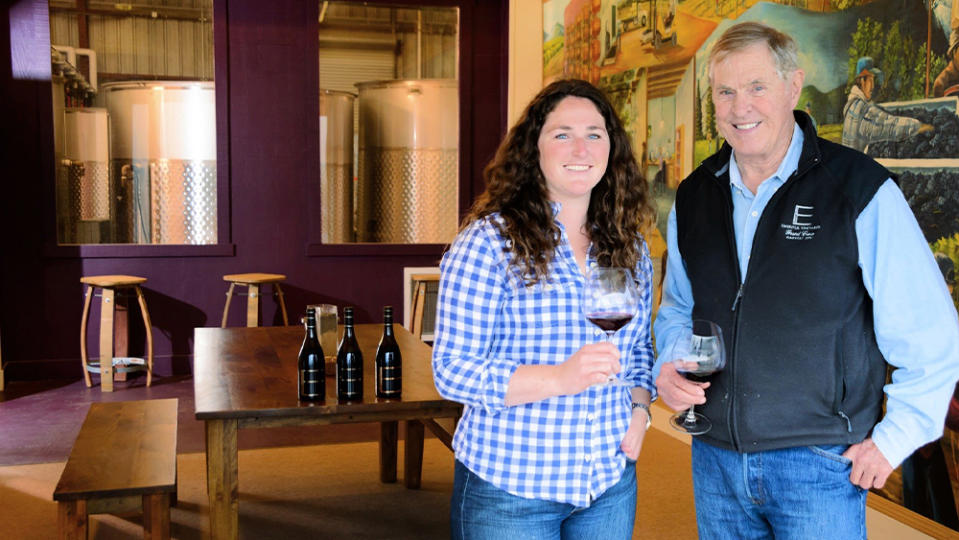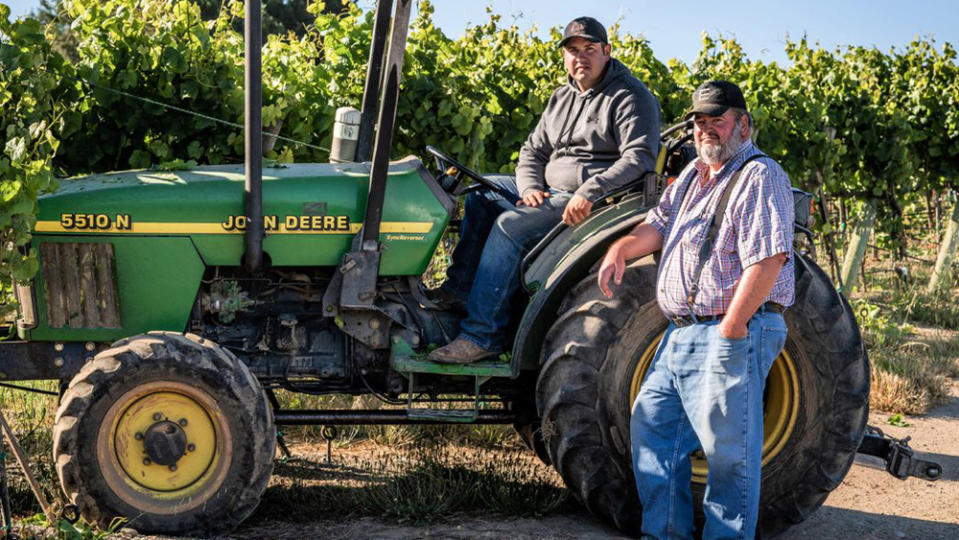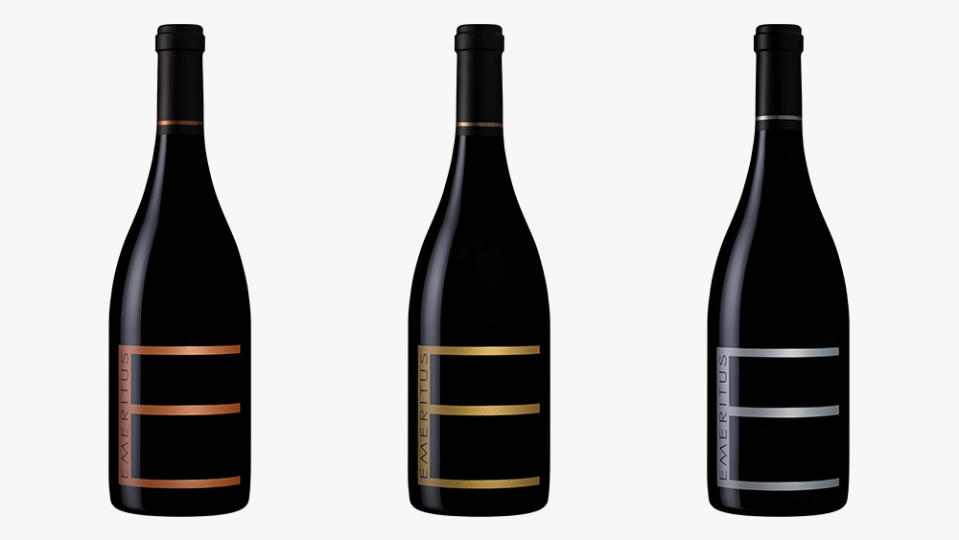This Sonoma Winery Is Making Some of the Most Underrated Pinot Noir in California

Anyone who has dined out in the United States in the past 40 years is no doubt familiar with Sonoma-Cutrer Chardonnay—a fixture at “white tablecloth” restaurants around the country for decades. It would surprise most of them to learn that the man behind Sonoma-Cutrer left it behind 25 years ago to launch a new project focused not on Chardonnay but on Pinot Noir. Brice Cutrer Jones switched his allegiance from white wine to red for a simple reason. “The best wines ever made in the history of the world are Pinot Noir,” he tells Robb Report. “When it is done well nothing can compare to the elegance and charm of Pinot.”
Founded in 1999, Jones’ Emeritus Vineyards in Russian River Valley turns out stellar estate-grown, terroir-driven Pinot Noir under the leadership of Jones’ daughter, Mari. The elder Jones established Sonoma-Cutrer in 1973 and launched Emeritus when he sold off his Chardonnay-driven brand. Considering the success of Sonoma-Cutrer, it is astounding that Emeritus remains so far under the radar despite its legacy and quality.
More from Robb Report
How This Winemaker Creates Outstanding Bottles in One of the World's Most Unforgiving Regions
Robb Recommends: The Best Advent Calendar Is This One That's Filled With Wine
Mari has a theory as to why they may be a little overshadowed compared to well-known Pinot Noir-driven wineries that are sourcing their grapes from other vineyards—including Emeritus. “Farmers don’t usually get on people’s radar,” she says.“We aren’t a very large winery. We sell more of our grapes than we make into wine ourselves.” At Emeritus’s two large sites in Sonoma—Hallberg Ranch and Pinot Hill—it is growing grapes for itself and for several well-known producers including Gary Farrell, Martin Ray Winery, Scherrer Winery, and Etude.

When Brice and his longtime friend and vineyard manager Kirk Lokka first encountered the 115-acre Hallberg Ranch, it was planted with the apple and peach trees that the Hallberg family cultivated after ripping out their grapevines during Prohibition. Situated on the Gold Ridge, a 10-mile-long area that is home to some of Sonoma’s best vineyards, Hallberg Ranch was “the last incredible piece of land suitable for a vineyard of its size in Sonoma,” Brice says. “This vineyard is one of America’s grand crus, we have never had a bad vintage from this vineyard, not in quality or quality. It is unmatched.”
To have a wide diversity of fruit to use in their cuvees, Brice, Lokka, and their team planted the ranch’s rolling hills with 11 different Pinot Noir clones including two field selections from iconic vineyards in the Côte de Nuits, and a selection from Brice’s friend, Aubert de Villaine, the proprietor of Domaine de la Romanée Conti. Their first vintage, 2004, was lost to fire, but the subsequent vintages of Emeritus Vineyards Pinot Noir drew some notice and critical acclaim. In 2007 they began “dry farming” Hallberg Ranch, which “means farming without supplemental irrigation or water,” Mari says. “It’s the only way you’re allowed to farm grapevines in much of the Old World, but it is hard to do in California because we don’t have any rain in the growing season, so you must have soils that retain moisture for the vines to use in the summer.”
In 2007 Emeritus acquired Pinot Hill, a smaller vineyard with soils that also allow for dry farming. Combined, these two vineyards provide the winery with 140 acres of Pinot Noir, making it the largest dry-farmed estate in Sonoma County. A 23-person vineyard team led by Lokka, who has lived on Hallberg Ranch since 2005, cares for the properties year-round.

“Dry farming effects everything,” Mari says. “The berries are smaller, so the wines are more concentrated. The vines ripen grapes in tune with the season, not irrigation. Often, we are picking two or three weeks earlier than our neighbors. Earlier ripening means more acid and fresher flavors in our wines. It also gives us ample opportunity to pick each block and each clone at their peak, which is different for every block. Dry farming heightens the uniqueness of each block and clone.”
Brice passed the torch to Mari in 2019; as president of Emeritus Vineyards, she works in all aspects of the business from vineyard to cellar to sales and marketing. Having previously worked at the Telluride Adaptive Sports Program after graduating from Colgate University, she likes to joke that she traded one non-profit for another when joining the family business. The only large change that she made after coming aboard was to start to produce a sparkling wine.
Emeritus Vineyards makes three tiers of wine starting with the silver label Hallberg Ranch bottlings, which are distributed nationally. Gold labels signify “micro-climate” wines that are made with a blend of clones from lower-yielding vines, which produce more concentrated flavors. Bottles with copper lettering on their labels contain single clone, single block selections that are farmed to produce only half the yield of other blocks. Bottles from 2018 and 2019 are currently available, with 2020 releases on the way.

Emeritus Vineyards 2019 La Combette Russian River Valley Estate Grown Pinot Noir takes its name from a gently sloping triangular block on Hallberg Ranch. It has enticing aromas of elderberry, pomegranate, and Earl Grey tea. Offering beautiful mouthfeel, luxurious tannins, and lively acidity, its combination of red and black berry flavors leaves you longing for another sip. Emeritus Vineyards 2019 Don’s Block Russian River Valley Estate Grown Pinot Noir is from a south facing block on Hallberg Ranch planted with Clone 115; the block is named in honor of founding winemaker Don Blackburn. A bouquet of Luxardo cherry, lavender, and mint paves the way for black cherry, dried Mediterranean herb, and cocoa powder flavors wrapped in plush tannins that are offset by a core of brilliant acidity. Emeritus Vineyards 2018 Pinot Hill Cruz Sonoma Coast Estate Grown Pinot Noir is produced using a clone that is said to be unique to New World vineyards. Lokka brought cuttings from the Grand Cru Richebourg vineyard in Vosne-Romanée in the early 1990s and propagated them for use by Emeritus. It has a fascinating nose of candied orange peel, Turkish delight, star anise, and faded cedarwood backed by soft red berry notes. It is surprisingly vivid on the palate, with bold fruit flavors and an underlying sensation of woodsy spice.
Mari Jones likes to tell the story of how she discovered Pinot Noir on a barrel-buying trip to Burgundy with her father when she was 12 years old. During a tasting in an ancient underground cellar, she turned to her father and said, “This wine is better than yours, you should make wine like this,” leaving her father speechless. She says that the experience gave her a different perspective on the family business, adding, “It was also when I fell in love with Pinot Noir.” While her first moves after joining her father at Emeritus involved building a tasting room and starting a direct-to-consumer program, it is obvious in every sip of Emeritus Pinot Noir that her longstanding love affair with Burgundy’s red grape is the guiding force in continuing her father’s mission to create great American Pinot Noir.
Best of Robb Report
Why a Heritage Turkey Is the Best Thanksgiving Bird—and How to Get One
The 10 Best Wines to Pair With Steak, From Cabernet to Malbec
Sign up for Robb Report's Newsletter. For the latest news, follow us on Facebook, Twitter, and Instagram.

